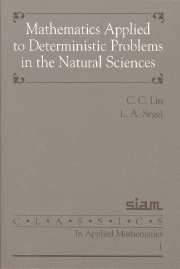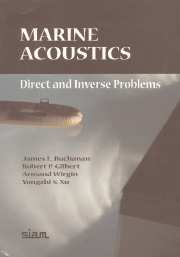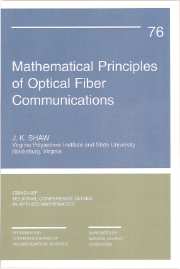Mathematics Applied to Deterministic Problems in the Natural Sciences
Addresses the construction, analysis, and intepretation of mathematical models that shed light on significant problems in the physical sciences. The authors' case studies approach leads to excitement in teaching realistic problems. The exercises reinforce, test and extend the reader's understanding. This reprint volume may be used as an upper level undergraduate or graduate textbook as well as a reference for researchers working on fluid mechanics, elasticity, perturbation methods, dimensional analysis, numerical analysis, continuum mechanics and differential equations.
- Suitable for upper level undergraduates or graduates and as a reference for researchers working in a variety of fields, including fluid mechanics, elasticity, perturbation methods, and differential equations
- Addresses the construction, analysis, and intepretation of mathematical models that shed light on significant problems in the physical sciences
- Exercises reinforce, test and extend the reader's understanding
Reviews & endorsements
'The words 'applied mathematics' decorate the covers of many books these days, but precious little of the practice of applied mathematics seeps through into the pages bound between those covers. Of the select few that do indeed introduce the reader to applied mathematics, this book may well be the best. I know of none better.' Paul Davis, American Mathematical Monthly
Product details
No date availablePaperback
9780898712292
630 pages
228 × 153 × 33 mm
0.876kg
Table of Contents
- A. An Overview of the Interaction of Mathematics and Natural Science:
- 1. What is applied mathematics?
- 2. Deterministic systems and ordinary differential equations
- 3. Random processes and ial differential equations
- 4. Superposition, heat flow, and Fourier analysis
- 5. Further developments in Fourier analysis
- B. Some Fundamental Procedures Illustrated on Ordinary Differential Equations:
- 6. Simplification, dimensional analysis, and scaling
- 7. Regular perturbation theory
- 8. Illustration of techniques on a physiological flow problem
- 9. Introduction to singular perturbation theory
- 10. Singular perturbation theory applied to a problem in biochemical kinetics
- 11. Three techniques applied to the simple pendulum
- C. Introduction to Theories of Continuous Fields:
- 12. Longitudinal motion of a bar
- 13. The continuous medium
- 14. Field equations of continuum mechanics
- 15. Inviscid fluid flow
- 16. Potential theory.








